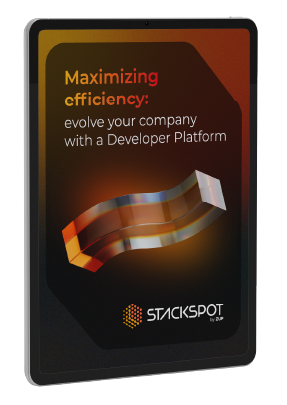Note: This blog post was created by the StackSpot Prompt Engineering team with the support of AI tools. This content underwent rigorous review for technical accuracy, content relevance, and well-written quality before its publication. Enjoy the read!
Legacy modernization is critical for large corporations looking to stay competitive in the ever-evolving world of technology. As the landscape continues to shift, it becomes imperative for companies to update their outdated systems and embrace modern platforms. This blog post will delve into the Best Practices for Legacy Modernization for senior engineers.
By sharing their perspectives, we hope to provide valuable insights that can be applied to your own professional experiences.
The Need for Legacy Modernization
Legacy systems, while once cutting-edge, can quickly become bottlenecks for organizations. Outdated technology and complex and tightly integrated systems can hinder innovation and the ability to adapt to changing market demands. As senior engineers, we have seen the impact of legacy systems on large corporations, and it is clear that modernization is necessary for survival in today’s fast-paced business environment.
The Challenges of Legacy Modernization
Legacy modernization is not without its challenges. One of the biggest hurdles is the complexity of existing systems. Large corporations often have interdependent systems built over the years, making identifying and untangling the web of dependencies challenging.
Additionally, there is often resistance to change from employees who are comfortable with the familiar, even if it is outdated. Overcoming these challenges requires careful planning, strong leadership, and a clear vision for the future.
Consume innovation, begin transformation
Subscribe to our newsletter to stay updated on the latest best practices for leveraging technology to drive business impact
The Role of Platform Engineering
Platform engineering plays a crucial role in legacy modernization. By designing and implementing modern platforms, engineers can enable organizations to scale, innovate, and adapt to changing business needs. This involves migrating legacy systems to cloud-based platforms, adopting microservices architecture, and leveraging containerization technologies.
With a robust platform engineering strategy, large corporations can overcome the challenges of legacy modernization and position themselves for long-term success.
Best Practices for Legacy Modernization
Here are some best practices for Legacy Modernization:
1 – Conduct a Comprehensive Assessment
Before diving into legacy modernization, conducting a thorough assessment of your existing systems is essential. This includes identifying dependencies, evaluating the technical debt, and understanding the impact on business operations. By gaining a holistic view of your systems, you can develop a roadmap for modernization that aligns with your organization’s goals.
2 – Prioritize and Plan Strategically
Legacy modernization is a complex process that requires careful planning and prioritization. It is crucial to identify the critical systems that need immediate attention and prioritize them accordingly.
Developing a clear roadmap with well-defined milestones and timelines will help manage expectations and ensure a smooth transition.
3 – Embrace Agile Methodologies
Agile methodologies, such as Scrum or Kanban, can significantly facilitate modernization. By breaking down the project into manageable sprints, teams can iterate quickly, gather feedback, and adapt to changing requirements. This iterative approach reduces the risk of failure and allows continuous improvement throughout modernization.
4 – Invest in Training and Education
Legacy modernization often requires engineers to learn new technologies and methodologies. Investing in training and education ensures that your team has the necessary skills to execute the modernization process successfully. This includes providing opportunities for upskilling, attending industry conferences, and encouraging knowledge sharing within the organization.
Conclusion
Legacy modernization is a challenging but necessary process for large corporations. By embracing modern platforms and leveraging the expertise of platform engineers, organizations can overcome the complexities of legacy systems and position themselves for long-term success. Senior engineers have seen firsthand the transformative power of legacy modernization and the positive impact it can have on businesses.
By following best practices for Legacy Modernization and embracing a critical perspective, you can drive your organization toward a brighter future.
Unlock the power of Legacy Modernization with StackSpot!
Are you navigating the intricate maze of legacy modernization? Discover how StackSpot helps with this process.
Seamlessly integrate new-age technologies, benefit from tailored automation, and leverage AI-driven insights to transform your legacy systems. Don’t just modernize… revolutionize!
Dive into StackSpot now and be the catalyst for your company’s digital metamorphosis. Explore StackSpot today!












